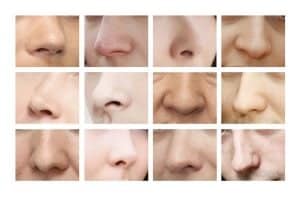
The research team created something called a “nano-nose” that is 200 times more sensitive than a dog’s nose in detecting disease.
Smartphones offer us mobile banking, organization, insurance, and even healthcare advice. MIT hopes to take this capability one step further by developing “nano-noses” to help with disease diagnosis. That’s right—your phone might soon be able to smell you. Yes. That’s right. We’re talking about a robotic nose.
Why smell matters in disease prevention
Many diseases change the way we smell thanks to complex actions in our hormonal, digestive, respiratory, or other systems. The changes are sometimes too small for humans to notice, which is why “cancer-sniffing” dogs—or more recently, coronavirus sniffing dogs— continue to make the news.
Robotics can pick up on these subtle cues to help healthcare practitioners diagnose earlier and more accurately. This augmented intelligence works with the expertise of doctors to help get patients the help they need and reduce misdiagnosis.
It isn’t easy to bring dogs into healthcare centers or take them on house calls. As medicine moves remote, researchers are looking for ways to extend this sense detection across distances.
MIT’s new “nose” is nano
Training a dog is time-consuming, but machines can train using datasets for multiple types of diseases. Adding digital olfactory capabilities to devices like smartphones can offer another way to catch diseases earlier and transmit critical information that doctors need to diagnose.
The MIT research team announced that they’d created something called a “nano-nose” that could identify prostate cancer from urine samples with 70% accuracy. The nose is 200 times more sensitive than a dog’s, and the team expects the technology to scale easily into other types of diagnostic procedures.
The device itself cannot draw the connection from smell to disease; that’s where AI comes in. Artificial intelligence uses data training to interpret complex patterns of molecules and categorize them based on previous medical samples. The machine at MIT used both medical data and data from disease-sniffing dogs to train.
The research team is still working on real-world applications but is confident that smartphones that can smell disease will be on the horizon soon.





























